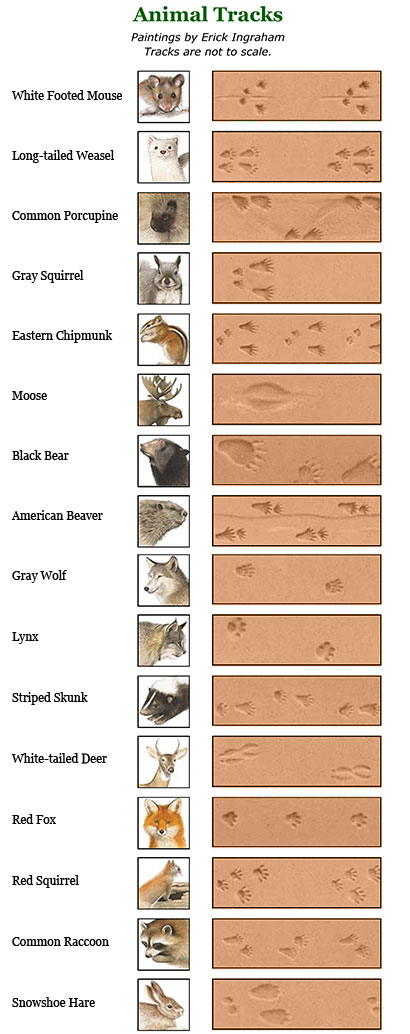When you are out in the woods or wilderness, you definitely won’t be alone. One of the most essential skills you can have is figuring out who you are sharing the area with. For the sake of tracking game, finding water, or keeping yourself safe from predators, identifying animal tracks can be life-saving.
If you have children who you are trying to prepare for a self-reliant life and equip with crucial survival skills, this is a particularly fun activity, as little ones tend to love animals. When hiking or camping, it’s always exciting to find animal tracks from the critters that are around.
This excellent infographic from the Old Farmer’s Almanac is a great starting point for learning animal tracks. These common North American creatures can of course also be tracked by their droppings, which, if you keep an eye out for them, can lead you to their tracks.
When tracking animals in the wild, look for soft, impressionable soil like mud or sandy ground that is likely to keep an impression. You can often find them around bushes and definitely near water. The size of the droppings and of course of their tracks can help you identify the size of the animal, and if you only see droppings, you can determine if the animal who left them is a vegetarian or meat-eater.
Looking for animal tracks can turn any hike or camping trip into a fun adventure. If you are looking for tracks in a place you often visit, you might want to take pictures or a sketch book to keep a collection of the tracks you find.
Here is the infographic to get you started. Happy tracking!


